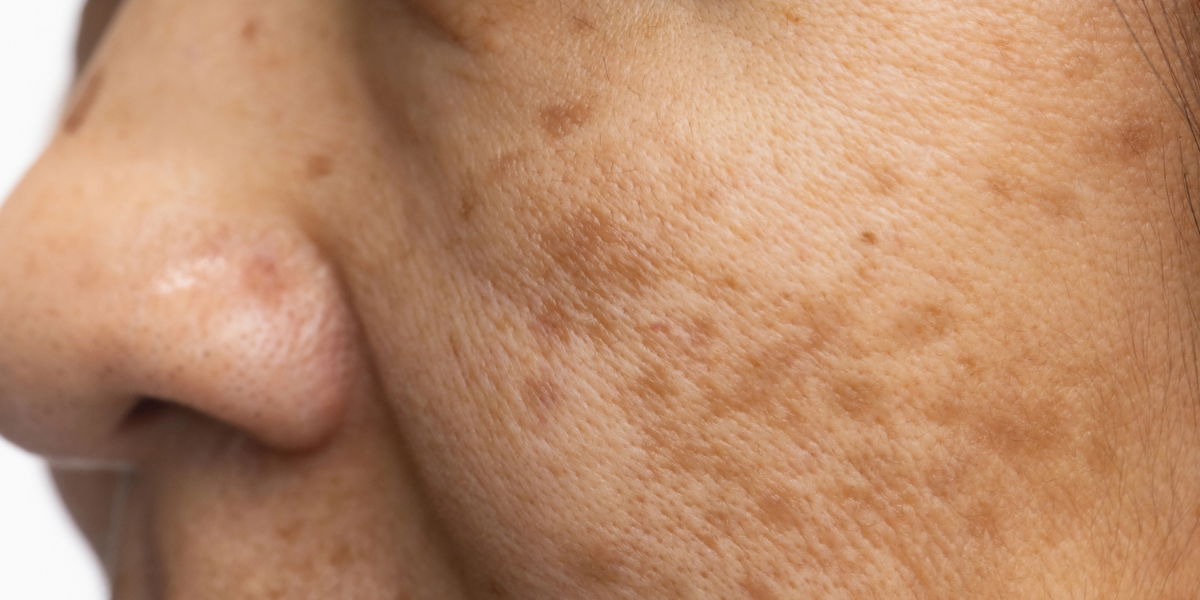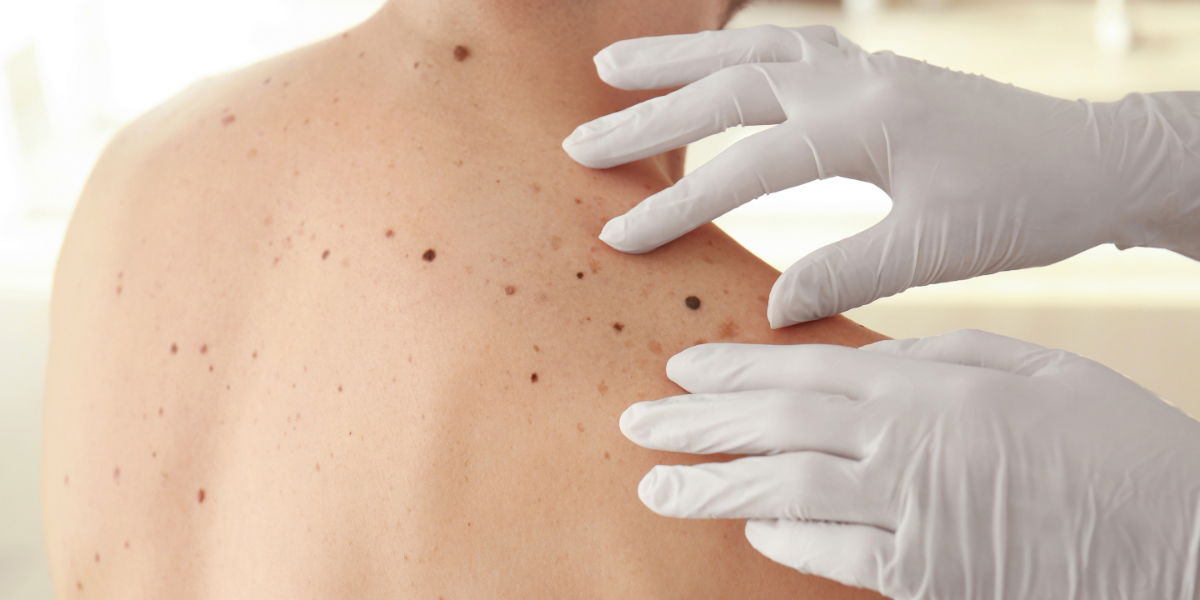
Melasma is a common but challenging skin condition that causes dark, discolored patches, usually on the face. For individuals in sunny areas like Delray Beach and Boynton Beach, the high exposure to UV radiation can make melasma even more difficult to manage. Here at Feinstein Dermatology, we specialize in treating melasma and similar pigmentation issues with a wide range of therapies customized to each patient.
This guide will cover the causes of melasma, factors that can worsen it, how it differs from other types of hyperpigmentation, and effective treatments available.
What Is Melasma?
Melasma is a form of hyperpigmentation that appears as brown or gray-brown patches, most often on the cheeks, forehead, nose, and upper lip. It’s sometimes called the “mask of pregnancy” because it commonly affects women during pregnancy due to hormonal fluctuations. While melasma can affect men, it’s much more prevalent in women, especially those with darker skin tones.
Melasma is not harmful but can be difficult to treat, and it often impacts self-esteem due to its visible nature. Unlike other types of pigmentation, melasma is complex because it involves both the epidermis (outer layer of skin) and dermis (deeper layers of skin). This multi-layered nature makes it more resistant to treatment than simpler pigmentation issues.
What Causes Melasma?
Melasma’s exact cause is still not fully understood, but several factors are known to trigger it or make it worse:
- Hormonal Changes: Hormones play a significant role in melasma, which is why it’s common in pregnant women or those on birth control. Hormonal fluctuations increase melanin production, causing patches of darker skin.
- Sun Exposure: UV exposure is one of the primary triggers for melasma. In areas like Delray Beach and Boynton Beach, sun exposure can be intense year-round, making sun protection crucial for those with melasma.
- Genetics: Melasma often runs in families, suggesting a genetic component. If family members have melasma, you may be more likely to develop it.
- Certain Medications: Medications that make the skin more sensitive to sunlight, like some antibiotics or anti-seizure medications, can contribute to melasma.
- Stress and Thyroid Disease: There’s some evidence that stress and thyroid conditions may be linked to melasma, although this connection isn’t fully understood.
- Skin Inflammation: Any type of skin inflammation or irritation, whether from acne, aggressive exfoliation, or other conditions, can lead to hyperpigmentation, including melasma.
Melasma vs. Other Types of Hyperpigmentation
Melasma is a type of hyperpigmentation, but not all hyperpigmentation is melasma. Here’s how melasma differs from other forms of dark spots or discoloration:
- Post-Inflammatory Hyperpigmentation (PIH): This type of pigmentation occurs after an injury or inflammation to the skin, such as acne or eczema. Unlike melasma, PIH is not related to hormones and usually fades over time with proper treatment.
- Sun Spots (Lentigines): Sun spots are small, darkened patches caused by prolonged UV exposure. They are typically more defined than melasma patches and do not spread beyond the surface layer of the skin.
- Freckles: Freckles are a natural reaction to sunlight in individuals with lighter skin and are usually genetic. They are smaller than melasma patches and often darken with sun exposure but don’t have the same underlying causes.
How to Prevent Melasma Worsening
While melasma can be difficult to prevent entirely, certain strategies can help avoid worsening its appearance:
- Strict Sun Protection: Use a broad-spectrum sunscreen with SPF 30 or higher daily, even on cloudy days. Reapply every two hours if you’re outdoors. Sun protection is especially critical in sunny areas like Delray Beach and Boynton Beach.
- Avoid Known Triggers: Avoid or limit hormone-disrupting medications if possible. If you’re pregnant or taking hormonal treatments, talk to your doctor about ways to manage melasma.
- Protective Clothing: Wide-brimmed hats and sunglasses can shield your face from direct sunlight, reducing the risk of melasma flare-ups.
- Use Gentle Skincare Products: Avoid harsh exfoliants or irritating products that can trigger skin inflammation, as this may worsen pigmentation.
Treatment Options for Melasma
Melasma treatment often involves a combination of topical therapies, procedural treatments, and a strong prevention routine. At Feinstein Dermatology in Delray Beach, we tailor our approach to each patient’s skin type, needs, and lifestyle.
1. Topical Treatments
Topical treatments are usually the first line of defense for melasma. Some of the most effective ingredients for reducing pigmentation include:
- Hydroquinone: This is a skin-lightening agent that works by inhibiting melanin production. Often combined with other ingredients like retinoids and corticosteroids, hydroquinone is a common treatment for melasma.
- Tranexamic Acid: This ingredient helps reduce pigmentation by blocking pathways that lead to melanin formation. Tranexamic acid can be used both topically and orally under medical supervision.
- Retinoids (Retin-A): Retinoids accelerate cell turnover, helping to fade melasma spots and even out skin tone over time.
- Niacinamide: Known for its anti-inflammatory and brightening properties, niacinamide helps reduce melanin transfer to the skin surface.
- Kojic Acid and Azelaic Acid: Both are natural skin lighteners that inhibit tyrosinase, an enzyme involved in melanin production.
- Antioxidants (Vitamin C, Ferulic Acid): These can reduce oxidative stress on the skin, which is beneficial for pigmentation issues.
2. Procedural Treatments
For more persistent cases of melasma, we may recommend in-office procedures. While not all treatments are ideal for melasma, the following options can be effective when performed by experienced professionals:
- Chemical Peels: Peels such as glycolic acid, Jessner’s solution, and mandelic acid can remove surface layers of pigmentation. It’s crucial to choose peels carefully for melasma, as overly aggressive peels can worsen the condition.
- Microneedling: This procedure involves creating tiny micro-injuries in the skin, which can help increase collagen production and allow topical treatments to penetrate deeper.
- Hydrafacial: A gentle exfoliating procedure that cleanses, hydrates, and can infuse brightening serums into the skin, helping to manage pigmentation without irritation.
3. Maintenance and Prevention
After treating melasma, it’s essential to maintain results with a consistent skincare routine that includes:
- Daily Sunscreen Use: Broad-spectrum sunscreen is essential to prevent melasma recurrence.
- Gentle Skincare Products: Avoid abrasive exfoliants, and opt for hydrating, soothing products to prevent inflammation.
- Regular Follow-Ups: Melasma requires ongoing care. Our team will work with you to adjust your treatment plan based on your progress.
Why Choose Feinstein Dermatology in Delray Beach for Melasma Treatment?
Feinstein Dermatology is widely recognized in Delray Beach and Boynton Beach for its expertise in treating pigmentation disorders like melasma. With our board-certified dermatologists and advanced aesthetic treatments, we’re able to provide a holistic, individualized approach to melasma care. Our team has years of experience managing pigmentation issues, ensuring safe and effective treatment tailored to each patient.
Schedule a Consultation
If you’re struggling with melasma and looking for effective, compassionate care in Delray Beach or Boynton Beach, schedule a consultation with Feinstein Dermatology. We’ll work with you to create a personalized treatment plan that targets melasma and helps you achieve smoother, more even-toned skin. Contact us today to take the first step towards clearer skin.




